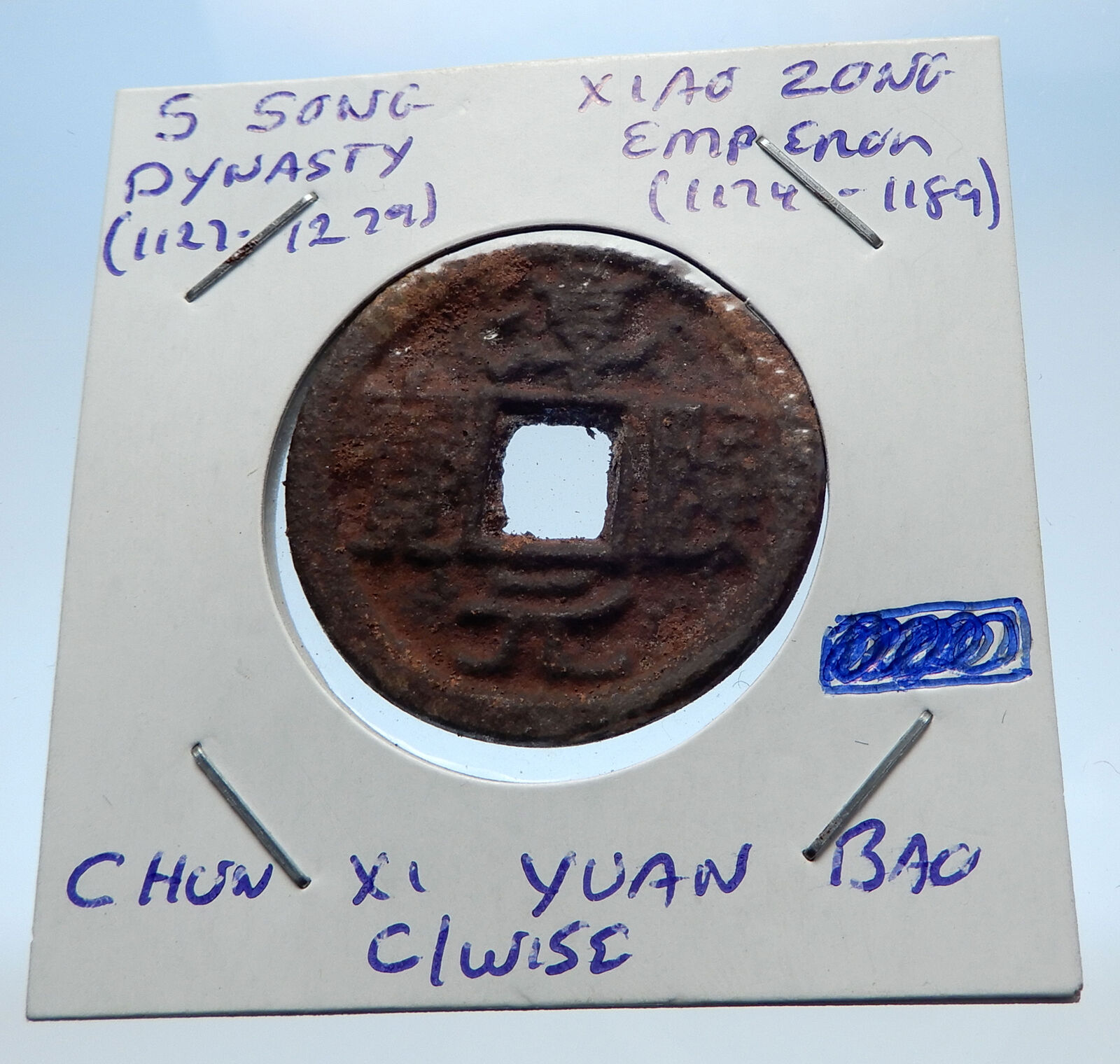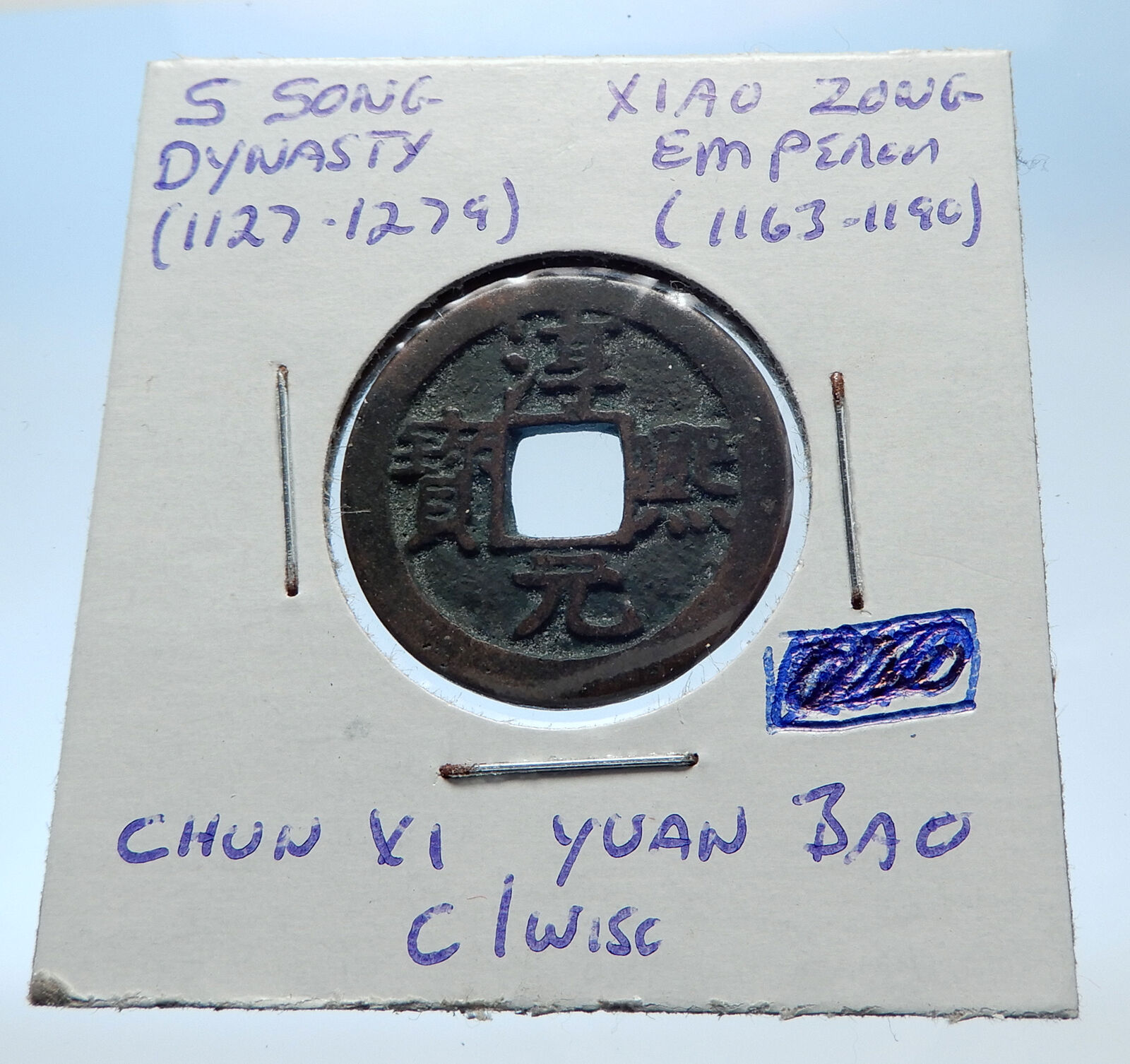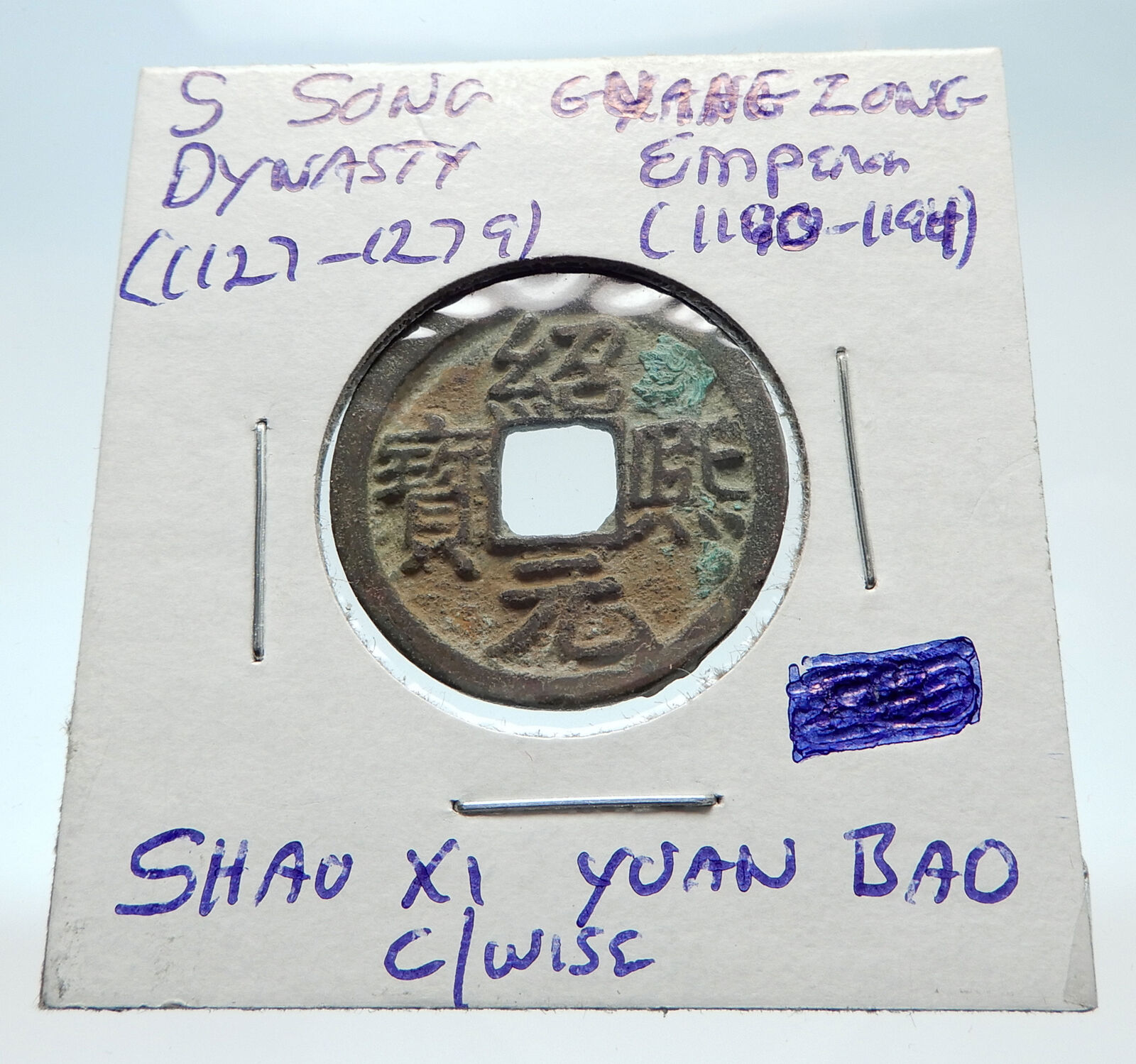|
China – Western
Wei Dynasty (535-557 AD)
Emperor Wen (535-57 AD)
Bronze Da Tong Wu Zhu
Cash Token
22mm, Struck 535-57 AD
Reference: H# 10.24
Symbols.
You are bidding on the exact item pictured, provided with a Certificate of Authenticity and Lifetime Guarantee of Authenticity.
 The Western Wei (Chinese: 西魏; pinyin: Xī Wèi) was a dynasty of China that followed the disintegration of the Northern Wei, and ruled northern China from 535 to 557. As with the Northern Wei dynasty that preceded it, the ruling family of Western Wei were members of the Tuoba clan of the Xianbei. The Western Wei (Chinese: 西魏; pinyin: Xī Wèi) was a dynasty of China that followed the disintegration of the Northern Wei, and ruled northern China from 535 to 557. As with the Northern Wei dynasty that preceded it, the ruling family of Western Wei were members of the Tuoba clan of the Xianbei.
After the Xianbei general Yuwen Tai killed the Northern Wei emperor Yuan Xiu, he installed Yuan Baoju as emperor of Western Wei while Yuwen Tai would remain as the virtual ruler. Although smaller than the Eastern Wei in territory and population, Western Wei was able to withstand the attacks from the eastern empire. Due to its better economical conditions, Western Wei was even able to conquer the whole western part of the Liang empire in the south and occupied the territory of modern Sichuan. In 557 Yuwen Tai’s nephew Yuwen Hu deposed Emperor Gong and placed Yuwen Tai’s son Yuwen Jue on the throne, ending Western Wei and establishing Northern Zhou.
Emperor Wen of Western Wei ((西)魏文帝) (507–551), personal name Yuan
Baoju (元寶炬), was an emperor of Western Wei—a branch successor state to
Northern Wei. In 534, Yuan Baoju, then the Prince of Nanyang, followed his
cousin Emperor Xiaowu in fleeing from the capital Luoyang to Chang’an, after
a fallout between Emperor Xiaowu and the paramount general Gao Huan.
However, Emperor Xiaowu’s relationship to the general that he then depended
on, Yuwen Tai, soon deteriorated as well, and around the new year 535, Yuwen
Tai poisoned Emperor Xiaowu to death, making Yuan Baoju emperor (as Emperor
Wen). As Gao Huan had, late in 534, made Yuan Shanjian the son of Emperor
Wen’s cousin Yuan Dan (元亶) the Prince of Qinghe emperor (as Emperor Xiaojing),
thus establishing Eastern Wei, Emperor Wen was known as Western Wei’s first
emperor, formalizing the division. Emperor Wen’s relationship with Yuwen
appeared cordial, but he was unable to exercise much real power.
Wu Zhu (Chinese: 五銖) is a type of Chinese cash coin produced from the Han dynasty in 118 BC when they replaced the earlier San Zhu (三銖; “Three Zhu”) cash coins, which had replaced the Ban Liang (半兩) cash coins a year prior, until they themselves were replaced by the Kaiyuan Tongbao (開元通寳) cash coins of the Tang dynasty in 621 AD. The name Wu Zhu literally means “five zhu” which is a measuring unit officially weighing about 4 grams however in reality the weights and sizes of Wu Zhu cash coins varied over the years. During the Han dynasty a very large quantity of Wu Zhu coins were cast but their production continued under subsequent dynasties until the Sui.
The production of Wu Zhu cash coins was briefly suspended by Wang Mang during the Xin dynasty but after the reestablishment of the Han dynasty, the production of Wu Zhu cash coins resumed, and continued to be manufactured long after the fall of the Eastern Han dynasty for another 500 years. Minting was definitively ended in 618 with the establishment of the Tang dynasty. Wu Zhu cash coins were cast from 118 BC to 618 AD having a span of 736 years, which is the longest for any coin in the history of the world.
Cash was a type of coin of China and East Asia, used from the 4th century BC until the 20th century AD. Originally cast during the Warring States period, these coins continued to be used for the entirety of Imperial China as well as under Mongol, and Manchu rule. The last Chinese cash coins were cast in the first year of the Republic of China. Generally most cash coins were made from copper or bronze alloys, with iron, lead, and zinc coins occasionally used less often throughout Chinese history. Rare silver and gold cash coins were also produced. During most of their production, cash coins were cast but, during the late Qing dynasty, machine-struck cash coins began to be made. As the cash coins produced over Chinese history were similar, thousand year old cash coins produced during the Northern Song dynasty continued to circulate as valid currency well into the early twentieth century.
In the modern era, these coins are considered to be Chinese “good luck coins”; they are hung on strings and round the necks of children, or over the beds of sick people. They hold a place in various superstitions, as well as Traditional Chinese medicine, and Feng shui. Currencies based on the Chinese cash coins include the Japanese mon, Korean mun, Ryukyuan mon, and Vietnamese văn.
|





 The Western Wei (Chinese: 西魏; pinyin: Xī Wèi) was a dynasty of China that followed the disintegration of the Northern Wei, and ruled northern China from 535 to 557. As with the Northern Wei dynasty that preceded it, the ruling family of Western Wei were members of the Tuoba clan of the Xianbei.
The Western Wei (Chinese: 西魏; pinyin: Xī Wèi) was a dynasty of China that followed the disintegration of the Northern Wei, and ruled northern China from 535 to 557. As with the Northern Wei dynasty that preceded it, the ruling family of Western Wei were members of the Tuoba clan of the Xianbei.




